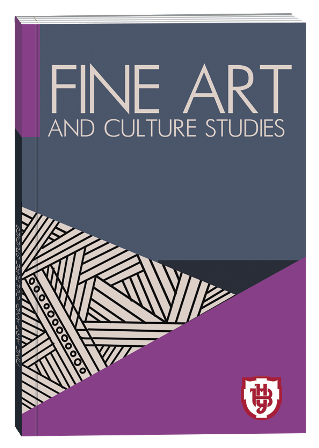THE PIANO HERITAGE OF DMITRY BORTNYANSKY: PROBLEMS OF RESEARCH AND PERFOMANCE
DOI:
https://doi.org/10.32782/facs-2025-4-12Keywords:
creativity of Dmitry Bortnyansky, piano heritage, chamber music, gallant style, Venetian composer schoolAbstract
The article focuses on the study of the piano heritage of the outstanding Ukrainian composer of the classicism era, Dmytro Stepanovych Bortnyansky, known to us primarily for his sacred works. It is noted that the piano heritage of D. Bortnyansky has not been preserved in full, but the available works allow us to conclude about the high composer’s skill of the Ukrainian artist and about his belonging to the Italian composer’s school of the era of the gallant style. The purpose of the article is to identify and consider the main problematic issues regarding the study and performance of the piano heritage of Dmytro Bortnyansky. The research methodology is based on a complex of historical-theoretical and practical-performance approaches, which ensures the objectivity of the results obtained. The scientific novelty of the research results lies in determining the contribution of Dmytro Bortnyansky to the creation of the piano repertoire. Conclusions. Works with the participation of the piano were written by D. Bortniansky during and after an 11-year stay in Italy, where the future composer mastered the art of counterpoint during classes with the famous Italian maestro, a representative of the Venetian composer school B. Galuppi. D. Bortniansky began his composing activity with the writing of secular music – Italian opera seria, arias and romances, chamber and instrumental works. This happened in the 1770s and continued during the next decade, in parallel with the creation of a choral repertoire for the Court Singing Chapel. Stylistically, D. Bortniansky’s piano works are close to the early works of V. A. Mozart, but behind the external lightness and simplicity lies a remarkable depth of content, in which the influences of the aesthetics of the gallant style are traced. The works were written for harpsichord and piano organ, now they can be performed on piano and harpsichord.
References
Бойко Г. В. Особливості творчості Д. С. Бортнянського у віддзеркаленні західноєвропейських традицій другої половини XVII – XVIII ст. Культура України. 2012. Вип. 37. С. 1–8.
Бортнянський Д. Концерт ре мажор для чембало з оркестром. Клавір / публікація, розшифровка і редакція М. Б. Степаненка. Київ : Музична Україна, 1985.
Бортнянський Д. Концертна симфонія для семи інструментів. Партитура та голоси / підготовка до друку С. Я. Фільштейн. Київ : Музична Україна, 1978.
Вахраньов Ю. В. Клавір і клавірна музика на Україні середини ХVІІ – першої чверті ХІХ ст. в історичних та літературних матеріалах. Музична Харківщина. Харків, 1992, С. 159–174.
Іванов В. Ф. Бортнянський. Київ: Музична Україна, 1980. 144 c.
Кашкадамова Н. Клавірні твори Дмитра Бортнянського: текст й інтерпретація. Записки Наукового Товариства ім. Шевченка. Львів, 2004. С. 172–179.
Корній Л. Історія української музики. Ч. 2: Друга половина ХVІІІ ст. Київ – Харків – Нью-Йорк : вид-во М. Коць, 1998. 387 с.
Сліпченко О. С., Мельніченко І. В. Європейські традиції в інструментальній творчості М. Березовського та Д. Бортнянського. Publishing House «Baltija Publishing». 2021. С. 478–491. URL : http://baltijapublishing.lv/omp/index.php/bp/catalog/ download/126/3497/7356-1
Степаненко М. Статті. Дослідження. Спогади. Київ : Гроно, 2016. 216 с.
Українська фортепіанна спадщина. Хрестоматія / упоряд., ред., вступ. стаття та комент. М. Степаненка. Київ : Музична Україна, 1983. Вип. 1.
Хмара Г. М. Роль італійського періоду у формуванні композиторського стилю Дмитра Бортнянського (на прикладі камерно-інструментальних творів). Часопис Національної музичної академії України імені П. І. Чайковського. 2019. Вип. 4 (45). С. 45–51.








